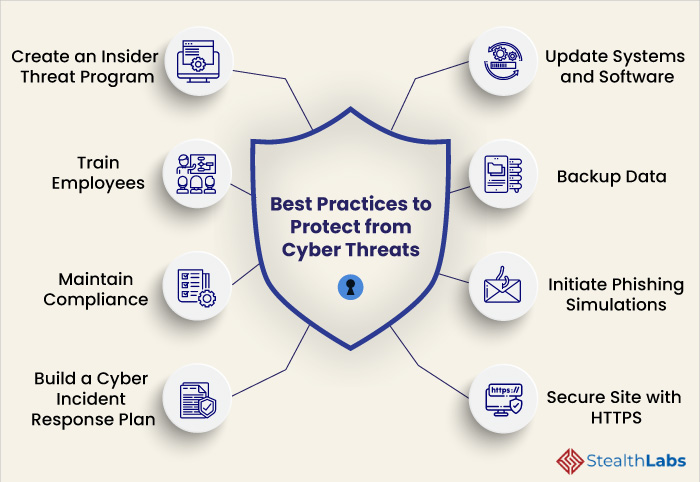Cybersecurity for Web Developers: Protecting Your Applications from Attacks
Introduction
Hey Learner!
Welcome to the world of cybersecurity for web developers. In today’s digital landscape, securing your web applications is paramount. Cyberattacks are becoming increasingly sophisticated and frequent, threatening the integrity and reputation of your online presence. This comprehensive guide will equip you with the knowledge and best practices to protect your applications from malicious actors.
Understanding Cybersecurity Threats
Types of Cyber Attacks
Cybersecurity threats come in various forms, each targeting different aspects of your web application. Common attacks include:
- SQL Injection: Exploits vulnerabilities in database queries to gain unauthorized access to sensitive data.
- Cross-Site Scripting (XSS): Injects malicious JavaScript into your website, allowing attackers to execute arbitrary code.
- Phishing: Attempts to trick users into revealing sensitive information by masquerading as legitimate sources.
Impact of Cyber Attacks
Cyber attacks can have devastating consequences for your web applications, including:
- Data breaches and loss of sensitive customer information
- Denial of service, disrupting access to your website
- Damage to your reputation and loss of customer trust
Implementing Cybersecurity Best Practices
Secure Coding Practices
- Validate user input to prevent malicious code execution.
- Use secure coding frameworks and libraries to avoid common vulnerabilities.
- Perform regular code reviews to identify and fix potential security flaws.
Firewalls and Intrusion Detection
- Install firewalls to block unauthorized access to your network and web applications.
- Implement intrusion detection systems to monitor network traffic for suspicious activity.
-

Source kyloot.com
Encryption and Authentication
- Encrypt sensitive data in transit and at rest to prevent unauthorized access.
- Use strong authentication mechanisms, such as two-factor authentication, to protect user accounts.
Penetration Testing and Vulnerability Assessment
- Perform regular penetration tests to identify vulnerabilities in your web applications.
- Conduct vulnerability assessments to scan for potential weaknesses that attackers could exploit.
Cybersecurity Awareness and Training
- Educate developers about cybersecurity risks and best practices.
- Provide training on secure coding techniques and incident response procedures.
Table: Common Cybersecurity Threats and Mitigation Techniques
| Threat Type | Mitigation Techniques |
|---|---|
| SQL Injection | Input validation, parameterized queries |
| XSS | Output encoding, content security policy |
| Phishing | User education, email filtering |
| Brute Force Attacks | Password hashing, rate limiting |
| DDoS Attacks | Cloud-based mitigation services, WAFs |
Conclusion
Cybersecurity is an ongoing journey that requires constant vigilance and adaptation. By implementing the best practices outlined in this guide, you can significantly enhance the security of your web applications and protect your users from malicious actors. To continue your learning journey, check out our other articles on cybersecurity for web developers:
- Tips for Securing Your Web Applications
- The Ultimate Guide to Penetration Testing
- Cybersecurity Best Practices for Agile Development
FAQ about Cybersecurity for Web Developers: Protecting Your Applications from Attacks
1. What is cybersecurity for web developers?
Answer: Cybersecurity for web developers involves protecting web applications from malicious attacks that exploit vulnerabilities in the application code, server configuration, or network infrastructure.
2. Why is cybersecurity important for web developers?
Answer: Cybersecurity is essential for web developers to safeguard sensitive user data, prevent website downtime, enhance user trust, and maintain the reputation of their organization.
3. What are the most common cybersecurity threats faced by web developers?
Answer: Common threats include SQL injection attacks, cross-site scripting (XSS), buffer overflows, denial-of-service (DoS) attacks, and phishing scams.
4. How can web developers protect against SQL injection attacks?
Answer: Employ techniques like input validation, using prepared statements, and escaping special characters in SQL queries.
5. How can web developers prevent cross-site scripting (XSS) attacks?
Answer: Sanitize user input, use content security policies (CSP), and implement anti-XSS libraries.
6. What are the best practices for input validation?
Answer: Use data validation libraries, define input types and formats, and check for invalid or malicious input before processing.
7. How can web developers detect and respond to security breaches?
Answer: Implement security monitoring tools, establish an incident response plan, and regularly review website logs and vulnerability reports.
8. What is the role of secure coding practices in cybersecurity?
Answer: Secure coding involves following coding standards and guidelines to prevent common security vulnerabilities.
9. How can web developers stay updated on the latest cybersecurity threats and best practices?
Answer: Attend industry conferences, read security blogs, and subscribe to security newsletters.
10. What certifications are available for web developers who specialize in cybersecurity?
Answer: Consider certifications such as Certified Ethical Hacker (CEH), Certified Information Systems Security Professional (CISSP), and CompTIA Security+ to enhance credibility and expertise in cybersecurity.
